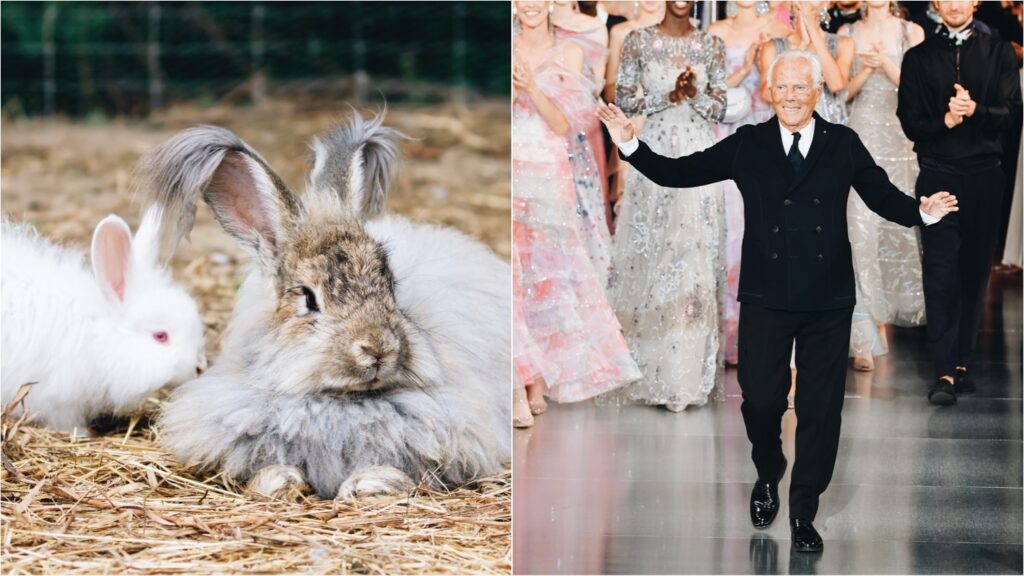Armani Group just announced a company-wide ban on angora from winter 2022.
All future collections by the luxury fashion house—including brands such as Georgio Armani, Emporio Armani, EA7, and Armani Exchange—will be angora-free following talks with animal advocacy group PETA about the ethical and sustainability concerns involved in its production.
“I am pleased to announce the abolition of angora wool from all the collections of the Armani Group, testimony to our tangible commitment in monitoring our production with respect to protecting the natural world. I have always believed in innovation and research of new materials and innovative methods for processing traditional raw materials,” says CEO Georgio Armani.
Armani bans angora wool
Angora “wool” comes from its namesake, the angora rabbit, which has a thick, soft, coat. (Not to be confused with angora mohair, which comes from goats.) The last decade has seen several shocking videos of live rabbits having their hair ripped out on fur farms around the world, though 90 percent of all angora comes from China.
The rabbits experience this ordeal approximately once every three months, along with the same cruelties found throughout the fur farming industry in general, from cramped conditions and abrasions to disease and shock. Well over half die of stress-induced heart attacks.
“Today’s socially conscious fashion consumers want nothing to do with an industry that rips the hair out of fully conscious rabbits’ bodies,” says PETA’s Vice President of International Programmes Mimi Bekhechi. “PETA is celebrating Armani’s decision to extend their no-fur policy to include angora, and encourages all designers still using it to get with the times.”
The fashion industry ditches fur
Armani joins well over 300 other brands from around the world in banning angora, including Gucci, Valentino, Calvin Klein, Diane von Furstenberg, Tommy Hilfiger, Burberry, and Stella McCartney. Just last month, luxury e-commerce platform Farfetch announced it would stop stocking angora products by April next year.
While Armani first introduced a fur-free policy in 2016, developed in partnership with the Fur Free Alliance, it continued to incorporate animal-derived hair and hides such as leather, wool, mohair, and cashmere—the latter two known for their particularly soft texture, much like angora. (It’s also worth noting that the production of each one of these four materials has its own ethical issues, from catastrophic environmental pollution to extreme animal cruelty.)
The fashion industry is slowly catching up with consumer expectations when it comes to sustainability and the treatment of animals. Fur has long been a source of controversy, and the general public increasingly opposes its use for luxury clothing, in particular.
Producers are responding by moving away from animal-derived versions in favor of synthetic alternatives, of which there are now plenty. (Armani itself has been producing faux fur coats for several years, as have countless other high-end brands.)
To learn more about the future of sustainable fur, read on here.


